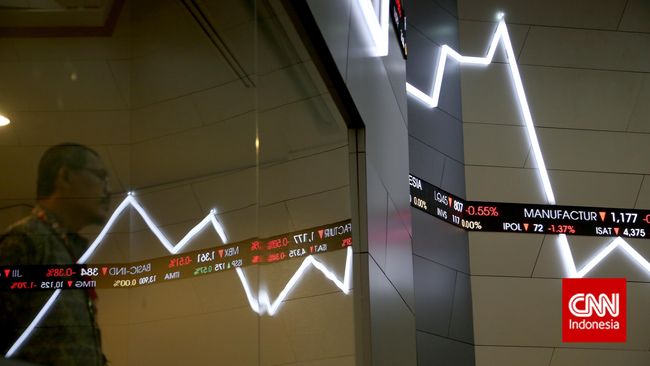Doyle Rice USA TODAY
Published 7:47 PM EDT Oct 8, 2018
With Hurricane Michael rapidly intensifying and threatening to smash Florida's Panhandle with dangerous storm surge, flooding and winds, Gov. Rick Scott didn't mince words on Monday night: "Making decisions tomorrow might be too late."
Described by Scott as both "monstrous" and "massive," Michael could make landfall as a Category 3 hurricane with sustained winds of at least 111 mph, according to current projections. It's forecast to become a major hurricane sometime Tuesday and should make landfall Wednesday afternoon or evening, likely between Pensacola in the far western Panhandle and Apalachicola, directly south of Tallahassee on the coast.
"Michael could be one of the worst hurricanes to ever strike the Florida Big Bend and Florida Panhandle region," warned Weather Channel hurricane expert Rick Knabb.
Michael's maximum sustained winds increased to nearly 80 mph with higher gusts on Monday, the National Hurricane Center said.
Related: Hurricane Michael forces cruise ships on Western Caribbean itineraries to reroute
More: Tropical Storm Michael: First airline waiver is out
More: Track Hurricane Michael
"Michael could produce three life-threatening hazards along portions of the northeastern Gulf Coast: storm surge, heavy rainfall and hurricane-force winds," according to the hurricane center.
Because of the storm surge threat, three Florida Panhandle counties issued mandatory evacuation orders.
A hurricane warning was posted for the Florida Gulf Coast, all the way from the Alabama-Florida border to the Suwannee River in Florida. A storm surge of up to 12 feet is forecast for a large section of the Florida coast.
According to the hurricane center, one potential impact from a Category 3 hurricane is that "electricity and water will be unavailable for several days to weeks after the storm passes."
A major hurricane is a Category 5, 4 or 3 hurricane, which has winds of at least 111 mph. If the forecast is correct, Michael would be the 11th major hurricane to hit Florida in October since records began in 1851, Colorado State University meteorologist Phil Klotzbach said.
Scott declared an emergency in 35 counties and asked President Donald Trump for help. And, Florida State University announced it will close from Tuesday through Friday this week.
“Take this seriously and keep your family safe,” Scott said from Bay County on Monday. “We know that a storm like Michael can be devastating and deadly.”
Scott said 500 Florida National Guard members were activated for planning, logistics and response, and 5,000 stood at the ready.
"Do not take a chance on storm surge," Scott said. "This storm will be life-threatening and really dangerous. This is coming very fast."
Speaking Monday to the International Association of Chiefs of Police convention in Orlando, Trump urged residents to heed local warnings and pledged the federal government's support.
“Never ends, but we’re all prepared and hopefully it won’t be as bad as it’s looking,” Mr. Trump said. “It looked a couple of days ago like it was not going to be much, and now it’s looking like it could be a very big one, so we’re prepared. And good luck.”
In the popular tourist destination of Seaside, people were starting to feel nervous, said Kevin Boyle, the town's director of events.
"I think everyone has been caught off guard by how quickly this thing has grown. It's started to slow down and strengthen out there in the Gulf and now we are looking at the possibility of a major hurricane hitting us dead on," he said.
"It's kind of got us all on edge right now," Rachel Burke, general manger of Brass Tap Craft Beer Bar on Panama City Beach, said Monday afternoon.
Alabama Gov. Kay Ivey declared a state of emergency in her state, "in anticipation of widespread power outages, wind damage and debris produced by high winds and heavy rain associated with Hurricane Michael."
The National Weather Service in Tallahassee said, "This is a storm to definitely take very seriously. Storm preparations should be rushed to completion today and Tuesday."
Late Monday afternoon, Michael was centered about 30 miles off the western tip of Cuba and about 520 miles south of Apalachicola, Florida. It moved to the north at 9 mph.
After the storm moves inland, it could dump additional unwanted rain on the Carolinas, which were battered by Florence in September. "Areas hit hard by Florence may face disruptions to ongoing cleanup efforts or renewed flooding depending on the track of the storm," AccuWeather senior meteorologist Kristina Pydynowski said.
Michael is the seventh hurricane of the 2018 Atlantic hurricane season.
Contributing: Karl Etters, Tallahassee Democrat; Amber Roberson, USA TODAY Network; Melissa Nelson Gabriel, Pensacola News Journal.
Let's block ads! (Why?)
Doyle Rice USA TODAY
Published 7:47 PM EDT Oct 8, 2018
With Hurricane Michael rapidly intensifying and threatening to smash Florida's Panhandle with dangerous storm surge, flooding and winds, Gov. Rick Scott didn't mince words on Monday night: "Making decisions tomorrow might be too late."
Described by Scott as both "monstrous" and "massive," Michael could make landfall as a Category 3 hurricane with sustained winds of at least 111 mph, according to current projections. It's forecast to become a major hurricane sometime Tuesday and should make landfall Wednesday afternoon or evening, likely between Pensacola in the far western Panhandle and Apalachicola, directly south of Tallahassee on the coast.
"Michael could be one of the worst hurricanes to ever strike the Florida Big Bend and Florida Panhandle region," warned Weather Channel hurricane expert Rick Knabb.
Michael's maximum sustained winds increased to nearly 80 mph with higher gusts on Monday, the National Hurricane Center said.
Related: Hurricane Michael forces cruise ships on Western Caribbean itineraries to reroute
More: Tropical Storm Michael: First airline waiver is out
More: Track Hurricane Michael
"Michael could produce three life-threatening hazards along portions of the northeastern Gulf Coast: storm surge, heavy rainfall and hurricane-force winds," according to the hurricane center.
Because of the storm surge threat, three Florida Panhandle counties issued mandatory evacuation orders.
A hurricane warning was posted for the Florida Gulf Coast, all the way from the Alabama-Florida border to the Suwannee River in Florida. A storm surge of up to 12 feet is forecast for a large section of the Florida coast.
According to the hurricane center, one potential impact from a Category 3 hurricane is that "electricity and water will be unavailable for several days to weeks after the storm passes."
A major hurricane is a Category 5, 4 or 3 hurricane, which has winds of at least 111 mph. If the forecast is correct, Michael would be the 11th major hurricane to hit Florida in October since records began in 1851, Colorado State University meteorologist Phil Klotzbach said.
Scott declared an emergency in 35 counties and asked President Donald Trump for help. And, Florida State University announced it will close from Tuesday through Friday this week.
“Take this seriously and keep your family safe,” Scott said from Bay County on Monday. “We know that a storm like Michael can be devastating and deadly.”
Scott said 500 Florida National Guard members were activated for planning, logistics and response, and 5,000 stood at the ready.
"Do not take a chance on storm surge," Scott said. "This storm will be life-threatening and really dangerous. This is coming very fast."
Speaking Monday to the International Association of Chiefs of Police convention in Orlando, Trump urged residents to heed local warnings and pledged the federal government's support.
“Never ends, but we’re all prepared and hopefully it won’t be as bad as it’s looking,” Mr. Trump said. “It looked a couple of days ago like it was not going to be much, and now it’s looking like it could be a very big one, so we’re prepared. And good luck.”
In the popular tourist destination of Seaside, people were starting to feel nervous, said Kevin Boyle, the town's director of events.
"I think everyone has been caught off guard by how quickly this thing has grown. It's started to slow down and strengthen out there in the Gulf and now we are looking at the possibility of a major hurricane hitting us dead on," he said.
"It's kind of got us all on edge right now," Rachel Burke, general manger of Brass Tap Craft Beer Bar on Panama City Beach, said Monday afternoon.
Alabama Gov. Kay Ivey declared a state of emergency in her state, "in anticipation of widespread power outages, wind damage and debris produced by high winds and heavy rain associated with Hurricane Michael."
The National Weather Service in Tallahassee said, "This is a storm to definitely take very seriously. Storm preparations should be rushed to completion today and Tuesday."
Late Monday afternoon, Michael was centered about 30 miles off the western tip of Cuba and about 520 miles south of Apalachicola, Florida. It moved to the north at 9 mph.
After the storm moves inland, it could dump additional unwanted rain on the Carolinas, which were battered by Florence in September. "Areas hit hard by Florence may face disruptions to ongoing cleanup efforts or renewed flooding depending on the track of the storm," AccuWeather senior meteorologist Kristina Pydynowski said.
Michael is the seventh hurricane of the 2018 Atlantic hurricane season.
Contributing: Karl Etters, Tallahassee Democrat; Amber Roberson, USA TODAY Network; Melissa Nelson Gabriel, Pensacola News Journal.
Let's block ads! (Why?)
https://desimpul.blogspot.com/2018/10/hurricane-michael-forecast-to-hit-gulf_8.html



:strip_icc():format(jpeg)/kly-media-production/medias/561747/original/img_mourinho-zidane.jpg)
:strip_icc():format(jpeg)/kly-media-production/medias/2326486/original/044775800_1533960111-20180811-Jose-Mourinho-3.jpg)
:strip_icc():format(jpeg)/kly-media-production/medias/1844097/original/032323300_1516792279-FOTO_CERITA-_Rumah_itu_Bernama_Gelora_Bung_Karno_07.JPG)




